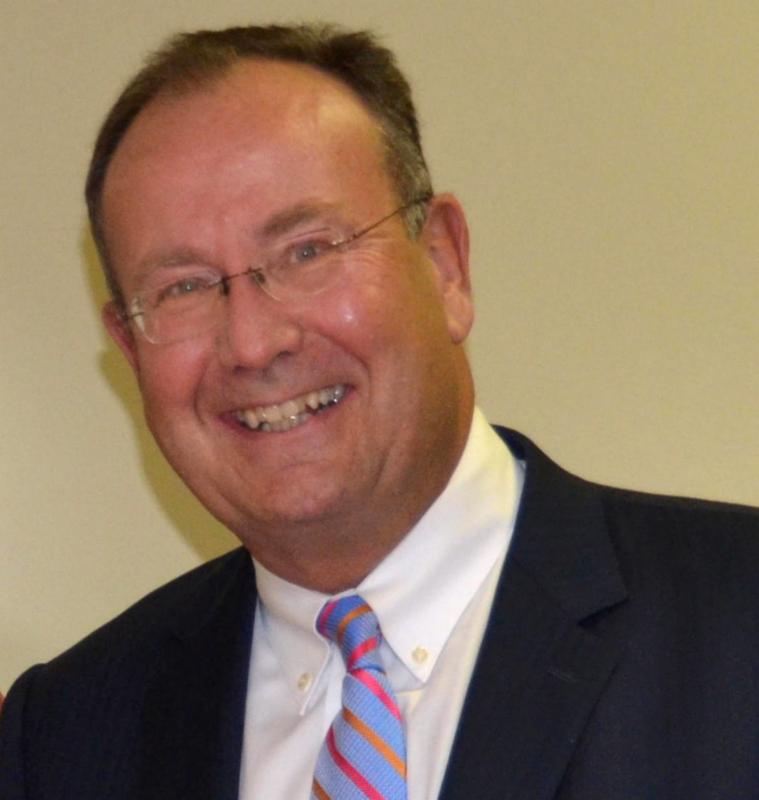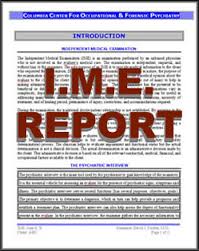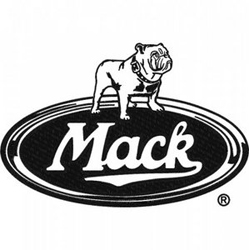|
iNews August 2015 - Issue 72 - In This Issue:
|
|
|
|
Trial Tips - How Would You Cross This Expert?
By Frank Scahill
|

Another summer is in the books and this one was filled with trials and verdicts. The days of slowdowns in the Courts during the summer are long past and this year we had trials and verdicts in June, July and August.
Our August trial was in Nassau County where plaintiff's counsel called Inspector Christopher Calbrese from the Westchester County Police Department as his accident reconstruction expert. Inspector Christopher Calbrese is the Chief of Detectives in Westchester County and former head of the Accident Investigation Squad. He is an impressive and distinguished individual who made for a great witness for the plaintiff on direct. How would you cross this expert? A Nassau County jury would obviously be impressed with his credentials and accept his testimony as credible. You have to challenge the expert on his conclusions, but if you start arguing about his vector analysis and math calculations, you will lose the jury quickly. You need to land a good punch as soon as the bell rings and you start your cross examination. How do you approach this? The expert's Curriculum Vitae is a goldmine for cross examination. You need to do your homework and thoroughly research your adversary's qualifications and experience. Does he or she embellish their qualifications? Do they list an organization where anyone can join if you pay the fee? Is there a bias in the publications listed? Are they only an expert for litigation? Where do they get their income? In this case, the plaintiff's expert, who touted his credentials to the jury as an accident reconstruction expert, also had a private detective agency which he owned called Maximum Detection LLC. That company's website advertised to the Bar, "Maximum Detection handles both plaintiff and defense work. Whether you need case enhancement or case review for weaknesses, we have the experienced investigators that can get the job done." That one phrase was all we needed to land that first punch. Rather than sounding like the most distinguished police officer in the history of Westchester County, the witness sounded more like an expert for hire, selling his wares to anyone who would pay his fees. I have attached a copy of the direct and cross. The excerpt below set the tone for cross-examination. Q. And besides this company Crash Vector, you're also involved in something called Maximum Detection? A. Yes.
Q. Those are two companies that you are involved with that do work on the side, correct? A. Yes. Q. And Maximum Detection is an investigative agency? A. Yes. Q And as part of Maximum Detection, by the way, do you own that 100 percent? A. Yes. Q. And you also own Crash Vector 100 percent? A. Yes. Q. So everything that is in the website of both of those companies are accurate and you reviewed it and made sure it is correct? A. Well, I won't say yes to that, but probably so. I haven't seen it in quite many months.
Q. The Maximum Detection website notes that you handle both plaintiff and defense work. You're advertising to both sides of the bar, is that fair to say? A. Yes.
Q. And you say whether you need case enhancement or case review for weaknesses, we have experienced investigators that can get the job done. Is that a fair statement? A. Yes. Q. Is that what you advertise, so if you have a weakness in your case come to you at Maximum Detection and you can get the job done, is that what you hold yourself out to the public and the legal profession? A. I'm not sure of your question.
Q. I just read what is on your website and I asked you is that how you hold yourself out to the legal profession if you have a weakness in your case come to you and you could get the job done? A. If there is a case --
Q. That's a yes or no? A. I don't believe it is because you're making it sound like something other than what it is and I would like to explain.
Q. I'm reading from your own website, is this something you authored? A. Yes.
Q. So when you put on your own website, if you need case enhancement or review of your case for weakness, come to us and we can get the job done, you're holding yourself out to the legal profession that you're the investigator that can get the job done if you have a weakness in your case, is that fair to say? A. Yes. In a professional way, yes.
Read the transcript here.
|
|
 Congratulations to Charles Mailloux for a defense verdict on damages on August 31, 2015, before Judge Ritholtz in Queens in MICHAEL PIORKOWSKI v. GEORGE J. DUEMIG, (Index No.: 911/11). The plaintiff had bilateral shoulder arthroscopic surgeries and right wrist surgery, post-accident. The jury found none were related to the accident involving our client on 2/2/09. Well done Charles!!!!
Congratulations to Tim Jones for a great result in a Queens County Case which was tried to verdict on damages on August 19, 2015 before Judge Esposito in Civil Court, JOSEPH J. MCGUIRE III v. ANTONY NACCARELLI (Index No. 300208/14). Plaintiff turned down $100,000, and asked the Jury for $600,000 on a shoulder surgery case with additional neck and back claims. The Jury awarded $75,000. Well Done Tim!
Congratulations to Lester Rodriques for a defense verdict in the case of ASHLEY DEVINE and LAUREN HOKRIEN DRAYTON R. SHORTER, (Index No.: 030869/14) in Rockland Co. on the issue of Damages on August 28, 2015. Great result Lester!!!!
|
|
|
Appellate Decisions of Note
|
Were the Doctors "Inappropriately Coerced" by Defense Counsel?

Douglass Kennedy is a defendant in a Westchester County Lawsuit filed by two nurses who claim they were injured during an altercation with Mr. Kennedy, as they tried to prevent him from taking his two-day old son out of the maternity ward at Northern Westchester Hospital "for some fresh air".
In the course of discovery, the plaintiffs submitted to Independent Medical Examinations at the request of the defense, which experts originally opined that the alleged injuries were causally related to the incident in question. Each Doctor thereafter issued addendum opinions, changing their impression on the issue of causation. Plaintiffs' counsel moved to disqualify the defense firm for Mr. Kennedy, claiming the attorneys will be witnesses at the trial, as they "inappropriately coerced" the Doctors into changing their opinions.
Judge William J. Giacomo in an opinion dated July 31, 2015, granted the application to disqualify the defendant's law firm. The Court cited the 1987 Court of Appeals decision in S & S Hotel Ventures Ltd. Partnership v 777 S. H. Corp., (69 NY2d 437 [1987]), "In order to disqualify counsel, a party moving for disqualification must demonstrate that (1) the testimony of the opposing party's counsel is necessary to his or her case, and (2) such testimony would be prejudicial to the opposing party (see S & S Hotel Ventures Ltd. Partnership v 777 S. H., 69 NY2d at 446; Daniel Gale Assoc., Inc. v George, 8 AD3d 608, 609 [2nd Dept 2004])."
Unless the cases settles, this decision is likely headed to Appellate Review. How far can defense counsel go in reaching out to their expert and providing additional materials which result in the Doctor changing his or her opinion on the ultimate question of causation? You are allowed to speak with your own expert, but when does your conversations with the expert cross the line to make you a witness in the case? This claim looks to be hotly contested. Surely this decision is bad precedent for the defense. Stay tuned for the decision on appeal.
Read the decision here.
|
 "A Horse Named Romeo" "A Horse Named Romeo"
North Conduit Avenue in Queens is a busy, congested, and often traffic snarled roadway. On October 8, 2006, Jared Johnson was riding a horse named Romeo on a path alongside of North Conduit Avenue in Queens when Romeo suddenly bolted into the roadway, and collided with a taxi owned and operated by Parjit Singh. Johnson was thrown from the horse, and suffered serious injuries, including skull fractures and a broken leg. On the date of the accident, Singh's taxi was insured by the petitioner, Fiduciary Insurance Company. Johnson filed a claim with the Fiduciary Insurance Company seeking to recover first-party benefits, ("no-fault" benefits), under Insurance Law § 5103. Fiduciary Insurance Company paid Johnson a total of $59,906.97 in no-fault benefits.
Fiduciary Insurance Company thereafter sought reimbursement, though "Loss Transfer" arbitration, of the no fault benefits paid from American Bankers Insurance Company of Florida, who insured the stable where Romeo was boarded.
In an award dated December 12, 2012, the arbitrator ruled that the petitioner could not obtain reimbursement from American Bankers because it had "failed to provide substantiation that [American Bankers] is a motor vehicle insurer that could be held liable under Section 5105 of Insurance Law."
In affirming a Supreme Court ruling, which dismissed the petition of Fiduciary Insurance Company to challenge the arbitrator's decision, the Appellate Division, in an opinion by Jude Hinds-Radix stated:
"Here, the American Bankers' policy did not provide no-fault insurance coverage for the type of accident underlying this dispute. Moreover, American Bankers did not insure a person, vehicle, or animal involved in the underlying accident, but only the stables at which the animal was boarded. Accordingly, American Bankers cannot be deemed to be an "insurer" as that term is defined by Insurance Law article 51 and the pertinent regulations. Moreover, Insurance Law § 5105 does not apply here because New York's No-Fault Law would not preclude American Bankers' insureds from being held liable to pay damages in an action at law. The decision of this Court in the Matter of Purex Indus. v Nationwide Mut. Ins. Co., (110 AD2d 67), does not support a contrary result. In that case, this Court ruled that the petitioner was "the self-insured owner of the vehicle involved in the accident" (id. at 69) and, thus, satisfied the statutory definition of an "insurer" that is "subject to mandatory arbitration for adjusting the payment of no-fault benefits between insurers," since, "[b]ut for the No-Fault Law, petitioner would be liable as an insurer to [the respondent's] insured in an action at law" (id. at 68). Here, on the other hand, the No-Fault Law would not preclude American Bankers' insureds from being held liable in an action at law (see Hunter v OOIDA Risk Retention Group, Inc., 79 AD3d at 12). (2015 NY Slip Op 06343).
Since American Bankers did not meet the definition of insurer or self-insurer under the No-Fault Law and the regulations promulgated thereunder (see Matter of Purex Indus. v Nationwide Mut. Ins. Co., 110 AD2d at 68-70), the determination of the arbitrator that the claims against it were not subject to compulsory arbitration was supported by a reasonable hypothesis. Accordingly, the Supreme Court properly denied the petition to vacate the arbitrator's award, and properly granted the cross petition to confirm the award."
|
"Wang and his Gang"
How far can counsel go in summations to the jury in attacking the position of his or her adversary?
In a claim against the City of New York following a multi-car pileup on the West Side Highway, during his summation, plaintiffs' counsel referred to counsel for the City as "Wang and his Gang."
Judge Manzanet-Daniels, in Gregware v City of New York decided on August 4, 2015 (2015 NY Slip Op 06408) Appellate Division, First Department, gave the plaintiffs' attorney a pass noting, "although some of the comments were highly inflammatory, they did not "create a climate of hostility that so obscured the issues as to have made the trial unfair'" ( Wilson v City of New York, 65 AD3d 906, 908 [1st Dept 2009].
In addition to the "Wang and his Gang" comment, plaintiff's counsel said:
"Now a lawyer stood before you and said, he said five signs. He said five signs. That's what I have a problem with. When we stand up here, it's our credibility . . . credibility of the witnesses is important. But the credibility of the lawyer is equally important."
Mid-way through plaintiffs' counsel's summation, the City made a motion for a mistrial based on what it characterized as "personal attacks on counsel," comments with "racial overtones," and plaintiffs' counsel's vouching for his own credibility.
Judge Manzanet explained her decision, stating, "We do not perceive comments referring to the City's counsel as "Wang and his Gang" as having improper racial overtones. Rather, the remark appeared to be a reference to the many lawyers from Mr. Wang's firm who participated in the trial. The comment was made in the context of explaining to the jury that at his EBT Pagano had been represented by other attorneys, "not Wang and his Gang."
Justice Sweeny in his dissent thought otherwise, "The record clearly reflects a pattern of highly inflammatory, prejudicial and improper comments made by plaintiffs' counsel during his summation. Taken as a whole, those comments deprived defendants, particularly the City of New York, of a fair trial. I would therefore remand this case for a new trial on all issues..... I disagree with the majority's position that these remarks were harmless because they were "isolated and constituted fair comment on the evidence."
"The record clearly reflects that they were neither. In truth, counsel had much to work with regarding these witnesses. However, that only makes his characterizations, personal opinions, and attacks all the more prejudicial and regrettable. They were designed to create an inflammatory and prejudicial atmosphere against the defendants and, given the virulence and repetition of the statements, it cannot be said that they did not have their intended effect on the jury. Indeed, the majority tacitly recognizes this fact by its determination to remand this matter for a trial on the allocation of damages."
|
Defending a Triable Issue of Fact

George Leicht was a New York City Sanitation driver. On May 17, 2006, he was driving a Class 8 Heavy Duty Mack Truck on Wilson Ave. in Brooklyn when a child ran out into the street in front of him. He turned sharply to the left causing the truck to hit a pillar from the elevated BMT Canarsie subway line. His leg was pinned in the truck cab, causing him to suffer injuries requiring a below the knee amputation. He sued Mack Trucks in a strict products liability claim, alleging a design defect and failure to warn of the dangerous product.
In response to a motion for summary judgment, the plaintiff submitted an expert's affidavit from an engineer, seeking to establish a triable issue of fact on the products liability claim. Defense counsel aptly attacked the qualifications of the expert.
In Leicht v City of New York Dept. of Sanitation (2015 NY Slip Op 06497) decided on August 12, 2015 by the Appellate Division, Second Department, a unanimous Court, noted:
"Although the plaintiff submitted an expert affidavit from an engineer, the expert failed to establish that he was qualified to render an opinion as to the alleged defective design of the Class 8 heavy duty vehicle. An expert is qualified to proffer an opinion if he or she is "possessed of the requisite skill, training, education, knowledge or experience from which it can be assumed that the information imparted or the opinion rendered is reliable" ( Matott v Ward, 48 NY2d 455, 459; see O'Boy v Motor Coach Indus., Inc., 39 AD3d 512, 513-514; Miele v American Tobacco Co., 2 AD3d 799, 802; Hofmann v Toys "R" Us, NY Ltd. Partnership, 272 AD2d 296, 296). Here, the expert failed to present evidence that he had any practical experience with, or personal knowledge of, the vehicle at issue, and the expert also failed to demonstrate such personal knowledge or experience with the design or manufacture of Class 8 heavy duty vehicles in general ( see Rosen v Tanning Loft, 16 AD3d 480, 481; Martinez v Roberts Consol. Indus., 299 AD2d 399, 399-400; Hofmann v Toys "R" Us, NY Ltd. Partnership, 272 AD2d at 296; Merritt v Raven Co., 271 AD2d 859, 862). Moreover, the expert's affidavit, attributing the accident to the defective design of the vehicle, the lack of certain safety devices in the vehicle, and the failure to warn that injury could potentially occur as a result of a head-on collision, was speculative and conclusory and, therefore, insufficient to raise a triable issue of fact ( see Poelker v Swan Lake Golf Corp., 71 AD3d 857)."
|
|
|
|
|
Copyright © 2014 Picciano & Scahill, P.C. All Rights Reserved.
|
|
|
|